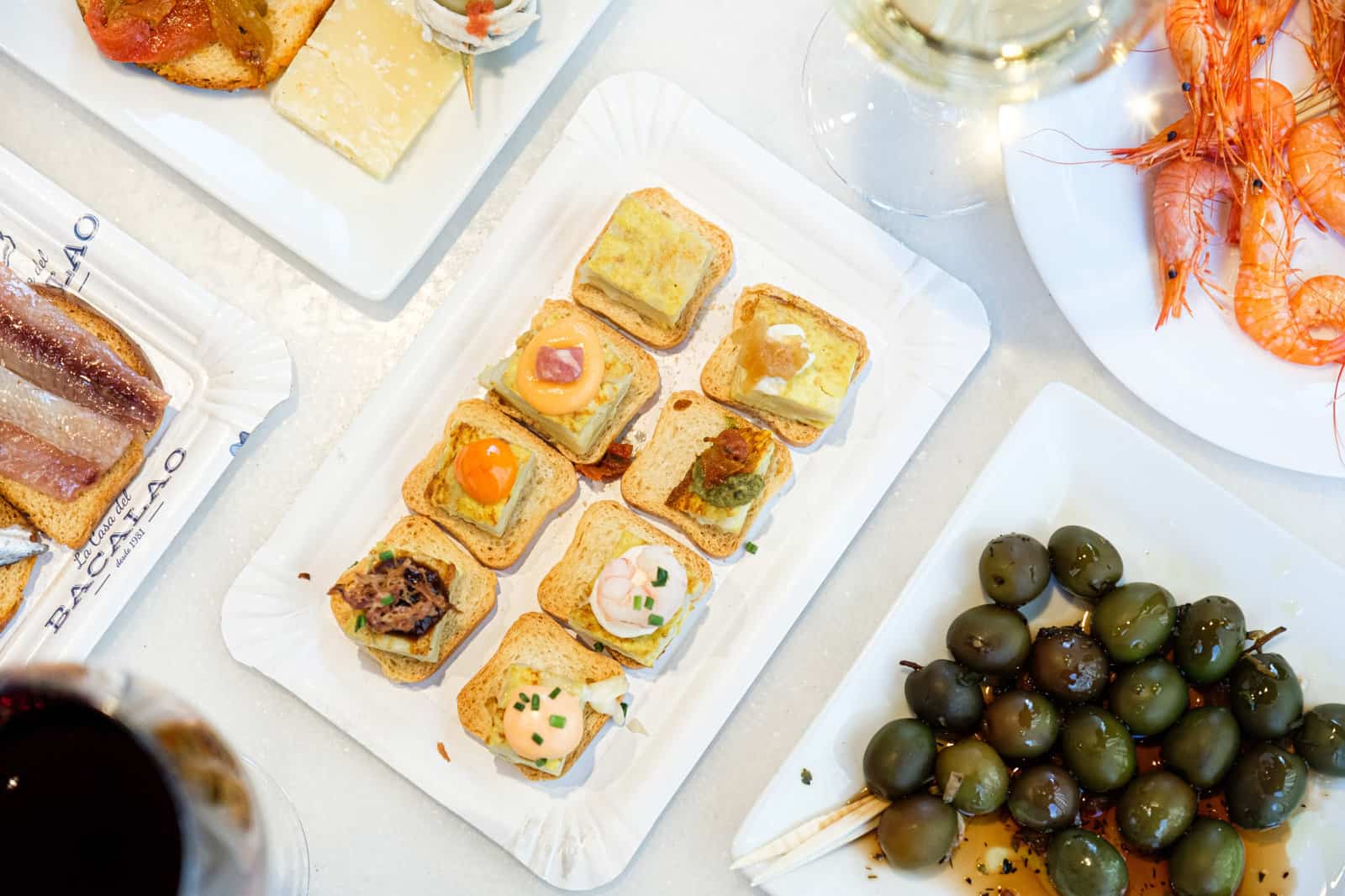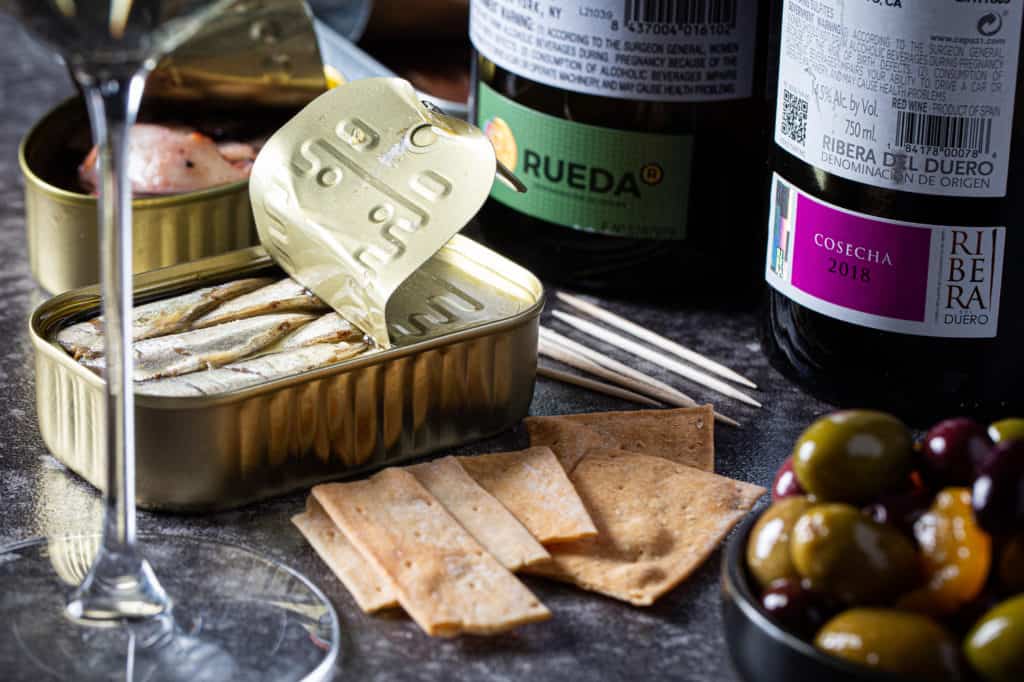
Our palates are ever-evolving, which means that food trends are too. Prognosticators abound, but often what’s old is new again, meaning that certain foods stand the test of time no matter what else may be on the table. And sometimes traditional foodways meet modern palates to become the next new thing even when they’re based on foods that have been around for decades – or longer.
And so it is that when we set the table for friends or family, we are often eager to be the palate leaders too. We create “tablescapes” of sorts, an array of foods and wines that are not only delicious but ones we think are the next big thing. Right now, those “next big things” are coming directly from the Spanish pantry, which houses the very best of what was, what is, and what will be, sometimes all in the same package.
But first, there’s wine
No matter what is on it, no table is complete without wine. Like many foodstuffs, wine requires a little looking back. In the Spanish wine region of Ribera del Duero, castles stand sentry over towns as symbols of history, strength, protectiveness, and power. The primary grape grown in this region mirrors this. Tempranillo doesn’t grow easily in the inhospitable climate and high altitude of the region, but it digs down – literally – to find its sustenance, a feat it’s been accomplishing for centuries.
Modern winemaking techniques took hold more recently, but even still, over one-third of the vines used to produce the wines today are at least 45 years old, and another 10 percent come from vines at least 80 years old. All this is to say that when an energetic wine like Tempranillo comes to the table – a wine with structure, red and black fruit flavors along with forest-like and earthy flavors — the food that’s served alongside had better have its own point of view too.

Verdejo verité
The same is true for Verdejo, the prime grape of neighboring Rueda. This white wine grape also struggles to grow, and yet it’s that struggle that has attracted well-known winemakers from around the world to this region. Maybe the draw is the very stubbornness of the grape to thrive. After all, winemakers love a good challenge. Whatever the case, the variety of Verdejo styles that are emerging are not only turning the heads of winemakers but so too wine lovers. Fresh citrus flavors, orchard fruit, crisp acidity, and a range in texture from light to full-bodied, speak to this grape’s versatility. In this land of castles and lions known to Spaniards and the world as Castilla y León, Rueda Verdejo slinks through sand and gravel, stones, and hard dirt, to emerge as its namesake feline – a lioness whose elegance belies its fight to survive.
An unlikely trio
Bring Ribera Tempranillo and Rueda Verdejo to the table, and you’d best have their co-equals in the food kingdom alongside. Look no further than the unlikely trio of conservas – tinned fish – Spanish olives, and gourmet potato chips to do just that. Like the Ribera del Duero and Rueda regions themselves, each of these foods has its own history and because of that, a place at the table, Spanish and American alike.

Capturing the sea
Tinned fish has been around since the early eighteenth century when a French brewer and distiller figured out how to can foods successfully. The Spanish got wind of this invention after a French boat carrying these provisions was shipwrecked off the coast of Galicia. The discovery didn’t take long to take hold in Spain, and in 1840, canned fish factories were born. Fast forward to today and these so-called conservas have not only taken Spain by storm but also the rest of the world.
Spanish conservas are not your supermarket tuna fish. Instead, they include a wide variety of fish, from yes – tuna – to anchovies, squid, octopus, sardines, razor clams, and many others. But the differences don’t end there. While some fish are packed in salted water, many others are packed in high-quality Spanish olive oil, maybe or maybe not with tomato and onion, and depending on the fish, sometimes spices and vinegar – a combination known as escabeche. These conservas can be powerful or they can be mild, but no matter what, they capture the sea in all its glory.
This is not by accident. In many cases, the fish may be tinned within hours of being caught. Most importantly, Spanish tinned fish is often sustainable fish. The way they’re caught and the fish that goes into these cans makes all the difference. Because of this, tinned fish on the table is not only good eating, it’s eating good.

A tree grows in winter
The land version of tinned fish may very well be olives. They too are brined or oil-packed, and they merge history, in this case ancient, with modern flavors. In many cases, the olives grown are organic.
Spain grows a variety of olives – Gordal, Arbequina, Hojiblanca, Manzanilla, Cornicabra, Picual, Empeltre, and Cuquillo to name just a few. Each is distinct in both size and flavor and, like tinned fish, grapes, or almost every agricultural product, they bring different qualities to the table. They might be meaty, buttery, peppery, nutty; thin-skinned, thicker-skinned, green, tan, grayish, or black. It’s about the variety and it’s about where it’s grown. It’s also about when the olives are harvested, which is when the days get shorter and colder – early winter to early spring – the time when olive trees are ready to shake their branches from the fruit that burdens them.
Put a (gourmet) chip on it
Potato chips are popular pretty much the world over, but as the move toward specialized chips becomes more of a thing, the Spanish table is a natural landing place. These days you will find Spanish pimentón-spiced potato chips, Ibérico ham-flavored ones, truffle, salt, or cheese-flavored chips too. These are not your mother’s potato chips, which means that like you, they love grown-up things like wine, as evidenced in tapas bars across Spain, as well as olives and conservas, preferably all together.
An offering
Spaniards take the potato chip and other one-bite wonders one step further. They call it an oferta, an offering, a complimentary “our house is your house” bite at tapas bars and some restaurants throughout Spain. Order a glass of wine and out comes a “micro tapa” of sorts, maybe in the form of a gilda – the classic combination of anchovy, pepper, and olive together on a toothpick. This expression of hospitality is a way to welcome customers in a disarming, delicious way. It’s also a way many Spaniards break up their workday or have it as an in-between work and home.
This custom translates easily to restaurants in the United States. Move over popcorn and bring out a vinegary anchovy on a skewer with a piece of olive oil-soaked bread instead. Or olives, just like they do in Spain. Or gourmet chips – ditto. From specialty shop to table, this edible expression of hospitality served with a refreshing glass of Joven (young)-style Verdejo or a Ribera Crianza unquestionably sets the stage for memorable get-togethers.
New year, new flavors
It may be that the notion of putting tinned fish, olives, and modern chips together on the same table is a bit of a stretch. Or that there’s no way they will go with Verdejo and Tempranillo. Think again. Put out a few varieties of tinned fish along with an assortment of Spanish olives and chips, pour glasses of different styles of Verdejos and Tempranillos, and you will discover flavors and textures you never thought possible – in a good way. These are the makings of a great indoor or outdoor picnic – a sustainable one at that – and great discussion too. Best of all it merges castles and lions – Tempranillo and Verdejo – with trendsetting foods and modern tastes. In this way, the Spanish table meets the American palate, and best of all, what’s old is not only new again but also better than it’s ever been.




